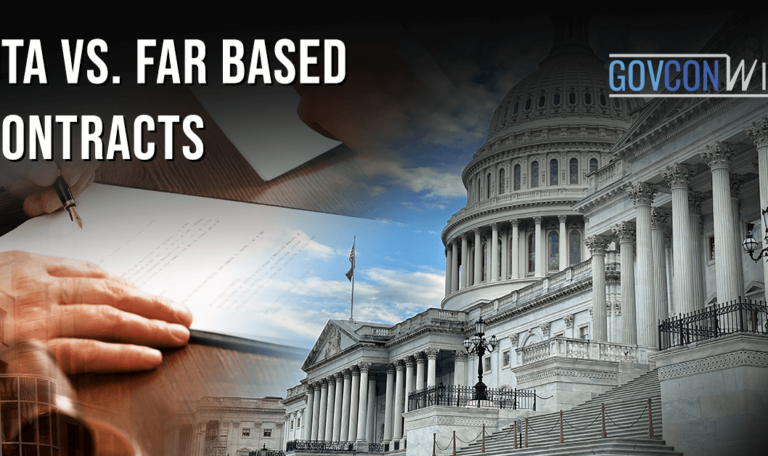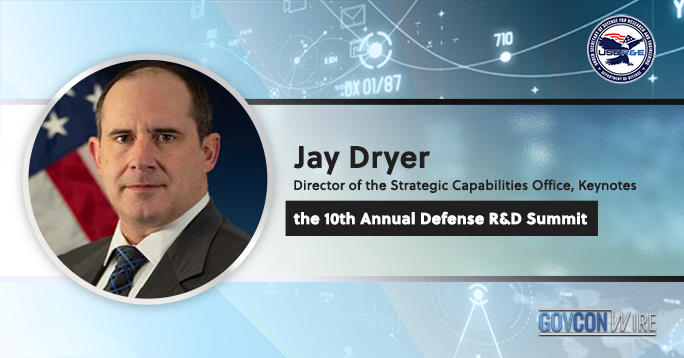Having millions and even billions of dollars recurring spending, the United States government and its federal agencies are known to be the world’s largest buyer of products and services.
The federal government buys almost everything they need from big and small businesses. To quickly obtain their needs, the federal government made government contract opportunities where large and eligible small businesses could have full and open competition.
Government contracting is a big industry that supports small businesses and makes them an instrument for the economic development of the U.S government. Recently, President Mr. Biden announced the proposed budget for the 2022 fiscal year (FY), amounting to $6 trillion.
With the proposed budget, many small businesses will prepare for this open competition. Let us say you’re a small business owner looking to expand into the federal marketplace. In that situation, you must equip yourself with sufficient knowledge so that the contracting opportunities and the industry does not overwhelm you.
Continue reading to learn more about the government contracting industry and the types of government contracts that can help in the growth of a small business.
What qualifies as a small business for government contracts?
To be eligible for federal contracts as a small business, a company must be certified as meeting the Small Business Administration’s (SBA) business size standards. Depending on the SBA contracting program, the certification process may differ.
Self-certification is possible for some small businesses by updating their small business profile in the official government organization called System for Award Management (SAM).
Small businesses must also apply for certification for additional programs that require information about the small business, its ownership, and supporting documentation.
Here are some details on the many contracting programs for which a small business may be eligible.
Woman-owned small business (WOSB)
When a small business joins the woman-owned small business federal contracting program, it becomes part of the eligible small businesses that can compete for federal contracts specifically for the program. This contracting program offers a number of advantages for a women-owned small business seeking help in government contracting.
The federal government limits competition to businesses that engage in the women-owned small business federal contracting program to create an equal playing field in the full and open competition.
Contracting officers can grant sole-source contracts under the woman-owned small business program. These prime contracts are for industries where women-owned small businesses and minorities are underrepresented.
Service-disabled veteran-owned small business (SDVOSB)
Every year, the federal government allocates a portion of contracting activity to small businesses owned by veterans that wish to have a business with the federal. Veterans-owned small businesses can compete for prime contracts with the Department of Veterans Affairs (VA).
To be considered for the program, small businesses must be legally registered and verified as Veteran-owned small businesses (VOSB) or service-disabled veteran-owned small businesses. The Department of Veterans Affairs’ Vets First Verification program may be able to help them get their certification.
To ensure preferential consideration and fair competition, the government limits competition for federal contracting to the VOSB/SDVOSB small business owners.
Historically underutilized business zones (HUBZones)
In full and open competition, historically underutilized business zones certified small businesses receive a ten percent price evaluation preference. Apart from being eligible to compete for certain contracts, HUBZone small business owners can also compete for agreement through other socio-economic programs.
As long as a small business qualifies, there is no time limit on how long it can engage in historically underutilized business zones programs. Your small business can recertify for the HUBZone program once a year while taking a program examination every three years.
Meanwhile, the SBA may unexpectedly visit a HUBZone small business and conduct examinations to ensure that any information submitted for the program application or recertification process is accurate.
8(a) program
For small businesses owned by experienced socially and economically disadvantaged small business owners that have been in business industry for years and are looking to expand their sales funnel or win awards from the federal marketplace, the 8(a) program can be useful. For the next nine years, the program will assist all socially and economically disadvantaged people and their small businesses.
Small disadvantaged businesses who take part in the programs are given training and technical support to help them compete more effectively in the U.S government economy.
The Small Business Administration (SBA) collaborates with federal agencies to encourage maximum participation in the 8(a) program, ensuring equal access to federal contracting opportunities.
The 8(a) program is a once-in-a-lifetime opportunity for any small business and individuals. Furthermore, contract awards are not guaranteed by the certification program. Small businesses owned by an eligible small disadvantaged business, on the other hand, can perform the following:
- Get one-on-one help with business development assistance
- Compete for set aside and sole-source contracts
- Participate in the SBA Mentor-Protégé program and be mentored.
- Pursue joint ventures with established businesses
- Receive free training from the SBA’s 7(j) management and technical assistance program
- Qualify to receive federal surplus property
Small disadvantaged business (SDB)
Small disadvantaged businesses receive nearly $50 billion in contracts from the federal government each year.
If you meet the following criteria set forth by the Code of Federal Regulations, you may register your company as a small disadvantaged business:
- One or more economically disadvantaged people must own and run fifty-one percent of the small business.
- The owner of the disadvantaged business must be certified as both socially and economically disadvantaged people.
- Based on the SBA standard size, it qualifies as a small business.
Small business owners interested to work with the government contracting officers and federal buyers can take advantage of the programs outlined above. The benefits of the mentioned programs may vary. Nevertheless, it is your obligation as a small business owner to select the appropriate program and bring your small business into potential growth.
Types of government contracts
Government contracting officers offer many different types of government contracts. These certain contracts come with a different exploit that can take a small disadvantaged business to great advantage.
For some details about these types of contracts, here are some:
Set-aside contracts for small businesses the government limits competition for certain contracts to help ensure a level playing field for small businesses. Set-asides are contracts that assist small businesses to compete for and win federal contracts.
There are two kinds of contracts for this type, competitive set-asides, and sole source set-asides.
A. Competitive set-aside
When at least two small businesses are capable of performing the work or delivering the purchased goods, the government agencies reserve the contract for them only. Most of the time, competitive set-aside happens automatically for government contracts amounting to under $150,000.
Any small business can apply for some set-asides, while others are only available to those who participate in the contracting opportunities programs run by the Small Business Administration.
B. Sole-source set-aside
Sole-source contracts are those that are awarded without the use of a competitive procurement process. This is most common in cases where a contract’s specifications can only be met by a single small business.
In some instances, sole-source contracts must be made public and labeled as such. These contracts are still available for potential vendors to view and bid on. The intent to sole-source may be withdrawn once the bidding process begins.
You must register your small business with the System for Award Management (SAM) and participate in any of the contracting opportunities programs listed above to be eligible for a contract.
Joint ventures
Through the all small mentor-protégé program, a small business with a mentor-protégé relationship can form a joint venture with a large business mentor. If their qualifications fit the SBA requirements, these joint ventures can compete for government contracts that are only available to small businesses.
Aside from that, if the joint venture meets the SBA requirements, it can also compete on set-asides for service-disabled veteran-owned, HUBZone, or women-owned small businesses.
1. Fixed-price contracts
A firm-fixed-price business contract guarantees a price that will not change. These certain contracts are the riskiest, as it bears complete responsibility for all expenses, earnings, and losses. It gives the government contractor the most incentive to keep costs under control and complete the project successfully while putting the least amount of administrative burden on the contracting parties.
A. Fixed-price contracts with economic price adjustment.
Application of a fixed-price contract with economic price adjustment is made when:
A. there is substantial doubt about the market or labor conditions’ stability over a long term of contract performance, and
B. contingencies that would otherwise be accounted for in the contract price can be discovered and dealt with individually.
In most circumstances, price modifications based on established prices should be restricted to industry-wide contingencies. Modifications to labor and material costs should be confined to industry events beyond the contractor’s control.
B. Fixed price incentives contracts
A fixed-price incentive contract is one in which the profit is adjusted and a formula based on the relationship between the final negotiated total cost and the total target cost determines the final contract price.
C. Fixed-price contracts with prospective price redetermination.
A fixed-price contract with price redetermination in the future provides for the following:
- A fixed price for the first period of contract deliveries or performance; and
- Prospective redetermination of the price for subsequent periods of performance at a specified time or times during the performance.
To acquire quantity manufacturing or services, a fixed-price contract with prospective price redetermination can be employed. It is feasible to get an agreement on a fair and reasonable firm fixed price for an initial time but not for subsequent contract performance periods.
D. Fixed-ceiling-price contracts with retroactive price redetermination.
For research and development contracts worth less than the simplified acquisition threshold, a fixed-ceiling contract with retroactive price redetermination is appropriate.
A ceiling price for the contract must be agreed at a level that represents the private sector’s reasonable risk-sharing. Only contract clauses requiring equitable adjustment or other revision of the contract price under specified conditions may cause the established ceiling price to be modified.
The contract should be awarded only when a fair and appropriate billing fee has been negotiated. Because the private sector has no cost-control incentives other than the ceiling price under this contract type, the contracting officer should make it clear to the contractor during evaluating bids and the pre-award discussion that the contractor’s management effectiveness and ingenuity will be taken into account retroactively redetermining the price.
E. Firm-fixed-price, level-of-effort term contracts.
For research and development in a certain subject, a firm-fixed-price, level-of-effort term contract is acceptable. The contract’s end product is typically a report detailing the outcomes obtained through the application of the appropriate level of effort. Payment, on the other hand, is dependent on the amount of effort put in rather than the results obtained.

2. Cost-reimbursement contracts
Contracts that are cost-reimbursement in nature pay for authorized incurred expenditures to the amount specified in the contract. These contracts establish a cost estimate for obligated monies as well as a ceiling that the contractor may not exceed without the consent of the contracting officer (except at its own risk).
A. Cost contracts
A cost contract is a sort of cost-reimbursement contract in which the contractor is not compensated in any way. For research and development projects, a cost contract may be acceptable, especially when working with nonprofit educational institutions or other nonprofit organizations.
B. Cost-sharing contracts
A cost-sharing contract is a sort of cost-reimbursement contract in which the private sector is reimbursed for a portion of the agreed-upon costs rather than receiving a fee. When a contractor agrees to bear a portion of the costs in exchange for large compensatory advantages, a cost-sharing contract may be used.
C. Cost-plus-incentive-fee contracts.
A cost-plus-incentive-fee contract is a cost-reimbursement contract in which an initially negotiated charge is later increased using a formula depending on the connection between total permissible costs and total target costs.
D. Cost-plus-award-fee contracts.
A contract with a cost-plus-award-fee is a cost-reimbursement contract that includes a charge that includes the cost of
(a) a specified sum (which could be zero) at the start of the contract and
(b) An award amount based on the Government’s critical evaluation is sufficient to drive contract performance excellence.
E. Cost-plus-fixed-fee contracts.
A cost-plus-fixed-fee contract is a type of cost-reimbursement contract in which the contractor receives an agreed-upon charge at the start of the project.
The set price does not alter with real costs, but it may be adjusted if the work to be done under the contract changes. This contract type allows contractors to contract for tasks that would otherwise be too risky for them, but it only gives a minimal incentive to keep prices under control.

3. Incentive Contracts
When a firm-fixed-price contract isn’t appropriate and the essential goods or services can be obtained for less money and, in certain situations, with better delivery or technical performance, incentive contracts are appropriate. Contracts with incentives match the amount of profit or fee payable to the contractor’s performance.
Incentive contracts are intended to help achieve certain acquisition goals by:
1. Establishing acceptable and attainable targets that are conveyed to the contractor in a clear and concise manner; and
2. Incorporating proper incentive structures that are meant to-
2.1. encourage contractors to make efforts that may otherwise go unnoticed; and
2.2. discourage contractor inefficiency and waste.
Increases in profit or fee are paid only for achievement that exceeds the targets, and decreases are supplied to the degree that such targets are not fulfilled when predefined, formula-type incentives on technical performance or delivery are incorporated. Instead of minimum performance standards, incentive increases or decreases are given to performance targets.

4. Indefinite-Delivery Contracts
Indefinite-delivery contracts are divided into three categories: definite-quantity contracts, requirements contracts, and indefinite-quantity contracts.
When the exact timings or volumes of future deliveries are uncertain when the contract is awarded, an indefinite-delivery contract can be used to purchase goods or services.
A. Definite-quantity contracts.
A definite-quantity contract specifies the supply of a precise number of certain commodities or services for a specific period of time, with deliveries or performance planned at specific places upon request.
B. Requirements contracts.
During a given contract period (from one contractor), a requirements contract fills all genuine purchasing requirements for products or services for authorized Government activity, with delivery or performance to be arranged by placing orders with the contractor.
C. Indefinite-quantity contracts.
An indefinite-quantity contract guarantees an indefinite number of supplies or services within specified boundaries for a set period of time. Orders are placed by the government for specific needs. Quantity limits can be displayed in a variety of ways, such as a number of units or as a dollar amount.

5. Time-and-Materials, Labor-Hour, and Letter Contracts
A. Time-and-Materials contracts
Contracts for time and materials and labor-hours are not fixed-price contracts. A government contract for time and materials is the polar opposite of a fixed-price contract.
B. Construction and product development are two industries that frequently use this type of government contract. When the scope of the project or any changes that may occur during development cannot be forecast, time and material contracts are used.
C. Labor-hour contracts.
The difference between a labor-hour contract and a time-and-materials contract is that the contractor does not furnish the materials. For these contracts, the government reviews material prices, sets a per-hour labor rate, and sets a price ceiling.
If you can provide the services within your budget, this is a fantastic option. In other cases, known as labor-hour contracts, the contractor will provide support or labor instead of materials.
D. Letter contracts.
A letter contract is a documented preliminary contract that allows the contractor to start manufacturing products or providing services right away.
A letter contract may be used when:
- In order for construction to begin promptly, the government’s interests demand that the contractor be given a firm promise.
- It will be impossible to establish a definitive contract agreement in time to fulfill the deadline. A letter contract, on the other hand, should be as detailed and specific as possible given the conditions.
When a contracting officer awards a letter contract on the basis of price competition, the contract must have an overall price ceiling.
You can refer to the official website of the United States government – acquisition.gov – for more thorough information about the many sorts of contracts.
How do I get a list of government contracts?
Contracts from the federal government are made available on a variety of venues. Different information on government contracts is posted on gov websites/platforms. Here are the government-owned official websites where you may find a list of government contracts.
SAM.gov
SAM.gov is a government contract website where all contracts valued at $25,000 or more are posted. On the website, you can also view the previously awarded contracts which can give you an idea on preparing your bid.
The widely known FBO or FedBizOpps is where the federal and other federal agencies advertise their business with the federal opportunities. It’s also where federal agencies publish their RFIs, RFPs, and other procurement announcements.
For easy access, FBO has been integrated with SAM.gov and is now known as Contract Opportunities. Even for historical records, the original solicitation documents are usually available for download.
Dynamic Small Business Search (DSBS)
Dynamic small business search is one of the free-to-use and secure websites managed by the SBA that provides access to a list of federal contracts reserved for small businesses.
SubNet
Just like the DSBS, SBA handles a website where they post an announcement for a small business to explore called subcontracting opportunities.
Subcontracting is a fantastic place to start if you and your company are new to the business of government contracting. Subcontracting opportunities, as the name implies, involve negotiating with current and established government contractors to compete for a portion of the work assigned by the prime contractors.
Subcontracting on government contracts can be a wonderful way to get a better understanding of government contracting before bidding on prime contracts with the U.S government.
GSA.gov
When a small business wants to sell its company’s products to the federal government, they need to go to the General Services Administration (GSA) first. On its website, the Office of Acquisition Management and Policy maintains a list of all government acquisition and procurement connections.
The GSA was created to help government agencies engage with small business contractors. The General Services Administration (GSA), commonly known as the Federal Supply Schedule and Multiple Award Schedule (MAS), is a place where for larger contracts, long-term contract and service bids were found.
In addition, the GSA is responsible for a large share of all federal management expenses. Every year, this database captures billions of dollars in purchases. Obtaining a scheduling contract could aid in the expansion of your company.
What are the easiest government contracts to get?
Listed in this article are the different types of government contracts that a small business can bid on and potentially win. The government limits competition to each type of contract to equally qualify all those businesses that want to sell to the government.
There can’t be a definite answer to what is the easiest contract a small business can get. Because, in the end, the qualification will be the deciding factor and how you want your small business to do its business.
But! taking advantage of the contracting opportunity surely will help you as a business owner to expand your knowledge and convert those into actions in pushing your small business into a success.















